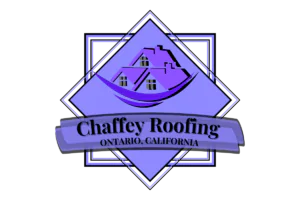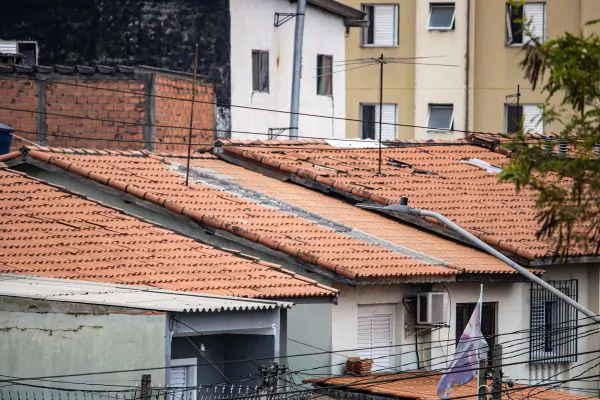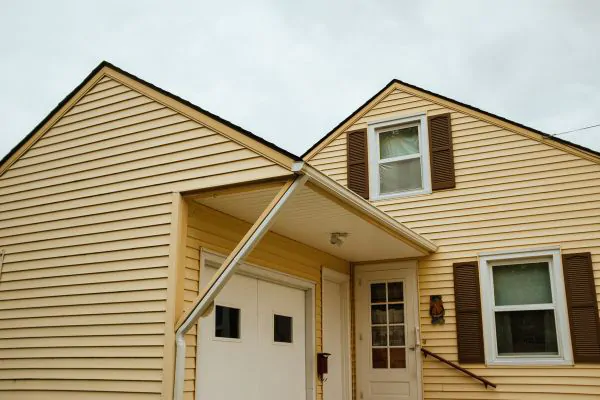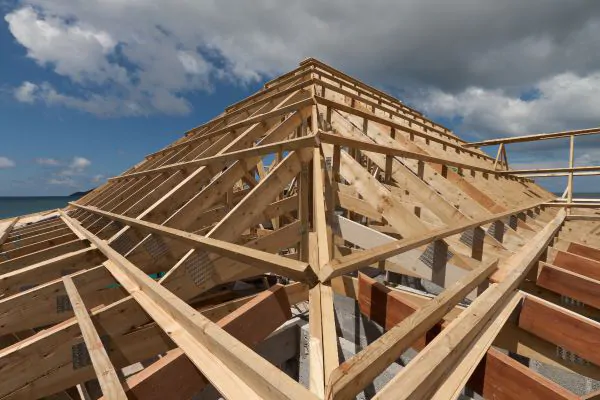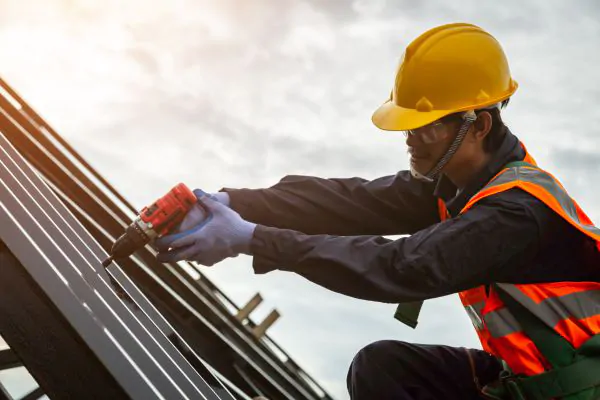Are you constantly battling roof leaks, clueless about their source? Many times, these nuisances can be traced back to a component many tend to overlook – the roof flashing. This blog post will explore everything from what exactly roof flashing is and its various types to when you need to replace it and how best to maintain it.
Let’s dive in; your leak-free home awaits!
Decoding Roof Flashing: What Is It and Why Do You Need It?
Roof flashing stands as a vital component of any roofing system. This specialized material operates as a protective barrier, preventing water from entering and damaging the roof’s structure.

It gets installed where different sections of your roof intersect or around areas such as chimneys and vent pipes. Flashing on the roof directs water away from these vulnerable points, helping to maintain the integrity of your property.
Understanding what roof flashing is is only part one; appreciating its necessity marks an equally important step. Bad weather or improper installation can expose flaws in roofing, leading to leaks and subsequent damage within your home’s interiors, such as mold growth or structural decay.
Well-installed and maintained metal flashing provides a crucial defense against these potential issues by providing an extra layer of protection between nature’s elements and your indoor comfort.
Exploring Common Types of Roof Flashing
You’ll find several types available on the market. Understanding these different types can help you select the best option for your needs.
● Step Flashing: Used around chimneys and walls, it consists of small rectangular pieces arranged in steps.
● Valley Flashing: As its name suggests, this type is used in valleys, the internal angles formed by two intersecting roofs.
● Vent Pipe Flashing: This specific type fits over flues and pipes to prevent water infiltration.
● Drip Edges: Mostly applied along roof edges to direct water away from fascia boards or into gutters.
● Continuous Flashing: Also known as “apron flashing,” it provides a long-lasting protection between vertical walls and horizontal roofs.
● Skylight Flashing: Created specifically for skylights, it serves as an extra barrier to keep leaks at bay.
● Chimney Flashing: Made especially for chimneys, it prevents water from entering at the chimney’s base.
Metal Choices for Roof Flashing: Which One Suits Your Roof?
Deciding on the right metal for your roof flashing plays a crucial role in overall roof health and longevity. Let’s look at the most common choices available on the market.
| Metal Type | Pros | Cons |
| Aluminum | Lightweight, rust-resistant, and easy to shape, aluminum is a popular choice for many homeowners. | It can’t be soldered, which puts a limit on the type of projects it can be used for |
| Copper | Copper is durable, rust-resistant, and ages gracefully, making it an aesthetically pleasing option. | However, it is more costly than other options and may not be suitable for those on a tight budget. |
| Galvanized Steel | Galvanized steel is known for its incredible strength and durability, offering a strong defense against harsh weather conditions. | Yet, it can rust over time if its zinc coating gets scratched or if the material gets exposed to the elements. |
| Stainless Steel | Stainless steel offers top-notch durability and resistance to rust and corrosion, making it a great long-term investment. | The only downside is its high cost, which may not be affordable for everyone. |
| Lead | Though not as common, lead is quite durable, malleable, and has a longer lifespan. | However, its potential for toxicity and environmental concerns make it a less popular choice today. |
Choosing the right metal for your roof flashing comes down to your specific needs, budget, and local climate conditions. No matter your choice, investing in high-quality materials and professional installation can significantly extend the lifespan of your roof.
Related Post: Price Breakdown 2023: How Much Does A New Roof Cost?
When to Replace Roof Flashing: Essential Guidance
Roof flashing plays a crucial role in protecting your home from water damage, but over time, it can deteriorate and lose its effectiveness. So, how do you know when it’s time to replace your roof flashing? There are a few key signs to look out for.
First, if you notice any cracks or holes in the flashing material, it’s a clear indication that replacement is needed. Additionally, if you see rust or corrosion on the metal flashing, this could also be a sign of wear and tear.
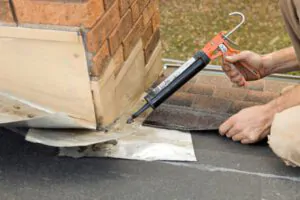
Another indicator is if your roof starts experiencing leaks despite regular maintenance. These are all red flags that suggest it’s time to invest in new roof flashing to maintain the integrity of your roof and protect your home from potential water damage.
Replacing roof flashing is not something you should attempt as a DIY project unless you have experience with roofing work. It requires specialized knowledge and skills to ensure proper installation and waterproofing.
Hiring a professional roofing contractor who specializes in flashings will ensure the job gets done correctly and efficiently. By proactively replacing worn-out or damaged roof flashings, you can safeguard your investment and prevent costly repairs caused by leaks down the line.
Roof Flashing Maintenance: A Crucial Step for Leak Prevention
Roof flashing maintenance is crucial in preventing leaks and ensuring the longevity of your roof. Follow these steps to keep your roof flashing in optimal condition:
● Inspect the flashing regularly for signs of damage or deterioration.
● Clean debris, such as leaves and twigs that may accumulate around the flashing.
● Check for loose or missing nails and replace them if necessary.
● Apply a waterproof sealant to any cracks or gaps in the flashing.
● Ensure that the flashing is securely attached to the roof surface.
● Trim any overhanging tree branches near the flashing to prevent damage from falling branches.
Comprehensive Roof Knowledge: Beyond Roof Flashing
Understanding roof flashing is crucial when it comes to maintaining a leak-free roof. However, there are other aspects of your roof that you should be aware of to ensure its longevity and performance.

One important factor is proper ventilation. Adequate ventilation helps regulate the temperature in your attic and prevents moisture build-up, which can lead to mold growth and structural damage.
Additionally, knowing the different types of roofing materials available will help you make informed decisions about repairs or replacements. Whether you have asphalt shingles, metal roofing, or clay tiles, understanding their strengths and weaknesses will allow you to choose the best material for your specific needs.
Finally, regular inspections of your entire roof system are essential in identifying issues beyond just flashing problems early on before they become major headaches down the road.
With comprehensive knowledge about all these aspects beyond just flashing, you’ll better understand how each component affects the overall health and functionality of your roof. By staying informed and taking proactive steps to maintain your roof’s condition, you can extend its lifespan and save yourself from costly repairs in the future.
Conclusion: Securing Your Roof Investment for the Long Haul
Protect your roof investment for the long term by understanding and properly maintaining roof flashing. By decoding what it is, exploring its types and metal choices, knowing when to replace it, and committing to regular maintenance, you can prevent leaks and extend the lifespan of your roof.
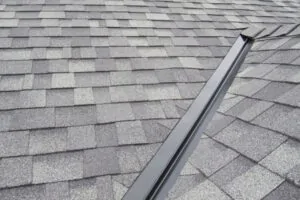
For all your roofing needs in Ontario, California, trust the expertise of Chaffey Roofing. Our seasoned professionals are dedicated to delivering top-tier roofing solutions that stand the test of time. Secure your roof investment and, by extension, your peace of mind. Contact Chaffey Roofing today to embark on a journey toward a durable, reliable, and resilient roof for your home.
